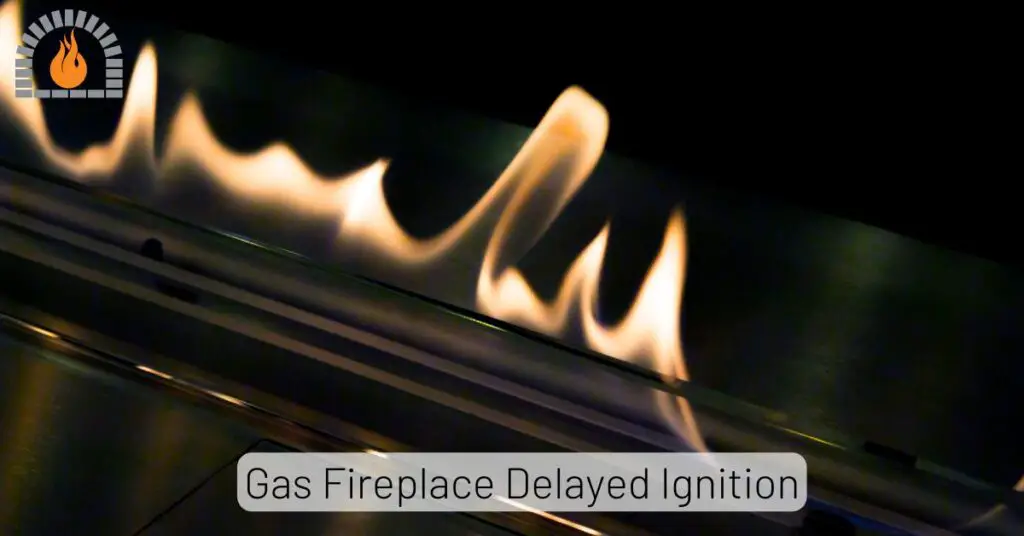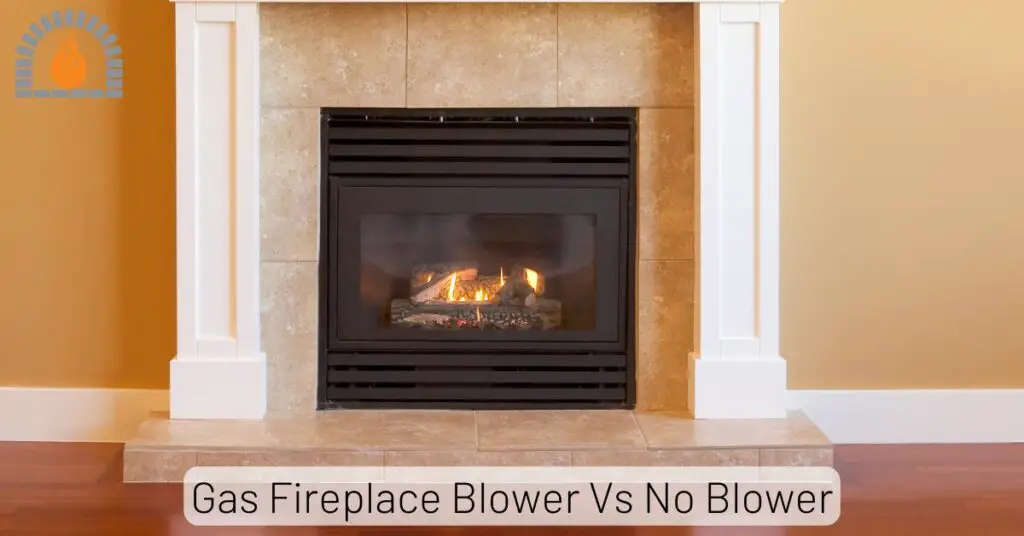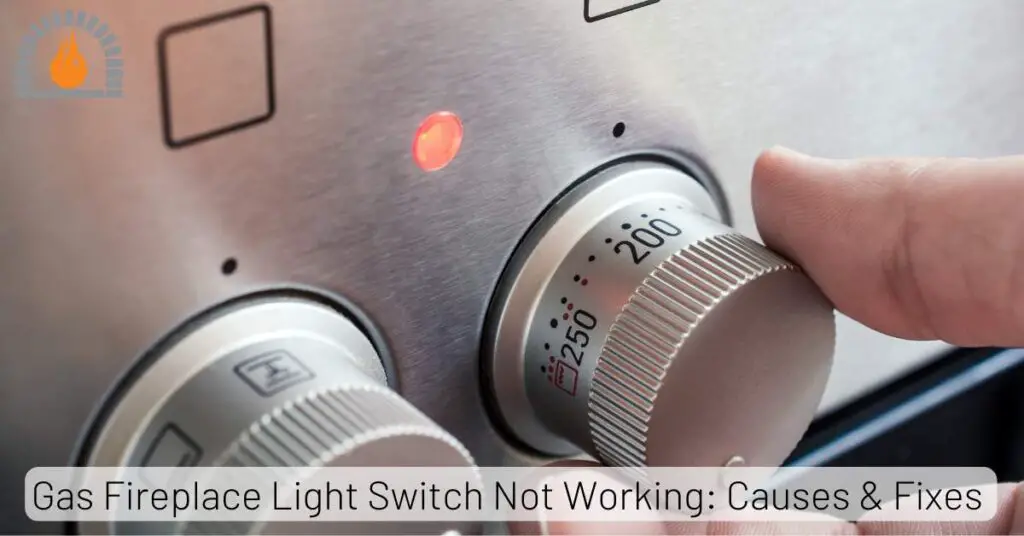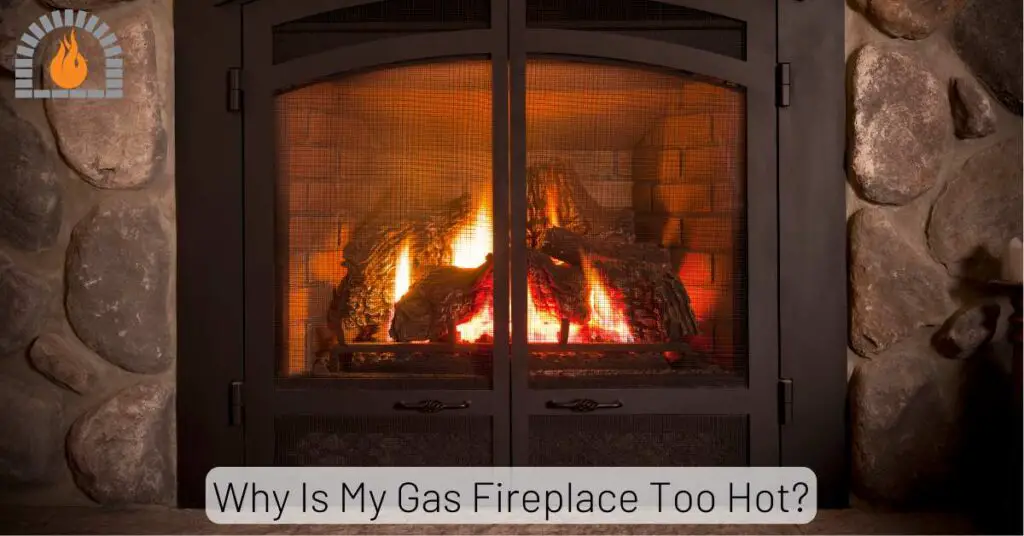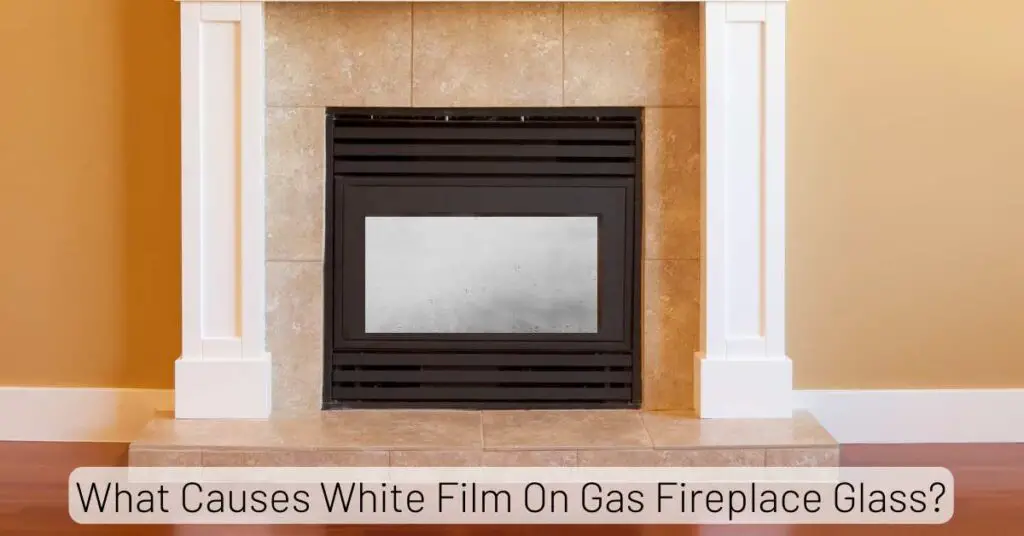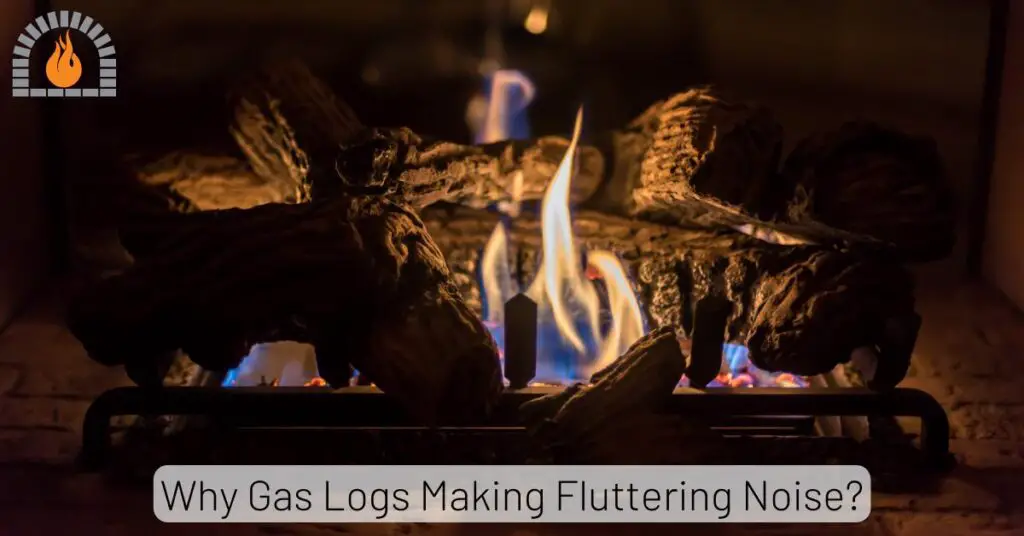A gas fireplace pilot light is a small but crucial component that serves as the ignition source for your gas fireplace. This tiny flame, designed to burn continuously, ignites the main burner when you turn on your fireplace. When functioning properly, it should display a steady blue flame that stands about 1-2 inches tall.
However, when problems arise, you might experience issues like a pilot light that won’t stay lit, a weak or flickering yellow flame, or complete failure to ignite. These common problems typically stem from a faulty thermocouple, gas supply issues, dirt and debris buildup, or component failure.
While most pilot light issues can be resolved through simple troubleshooting steps, some situations require professional assistance to ensure safe and proper operation of your gas fireplace.
Key Takeaways
- A properly functioning pilot light should burn with a steady blue flame approximately 1-2 inches in height
- The most common pilot light issue is failure to stay lit, often due to a faulty thermocouple or thermopile
- Regular maintenance and cleaning can prevent the majority of pilot light problems
- Simple troubleshooting steps can resolve many minor issues without professional help
- Safety should always be the priority when working with gas appliances
- When in doubt or if you smell gas, immediately contact a professional technician
How Gas Fireplace Pilot Light System Work
Before diving into troubleshooting, it’s essential to understand how your gas fireplace pilot light system works. The pilot assembly consists of several key components that work together to ensure safe and reliable operation:
- Pilot Orifice: A small opening that releases gas to create the pilot flame
- Thermocouple: A safety device that generates electricity from heat and keeps the gas valve open
- Thermopile: A larger version of a thermocouple that produces more electricity to power the main gas valve
- Gas Valve: Controls the flow of gas to both the pilot and main burner
- Ignition System: Either a piezo igniter (creates a spark) or an electronic igniter
When you light the pilot, the flame heats the thermocouple, which generates a small electrical current. This current signals the gas valve to stay open, allowing gas to continue flowing to the pilot. When you turn on your fireplace, the pilot flame ignites the main burner, creating the comforting fire you enjoy.
Types of Gas Fireplace Pilot Systems
There are primarily three types of pilot systems used in modern gas fireplaces:
| Pilot System Type | Description | Energy Usage | Best For |
|---|---|---|---|
| Standing Pilot | Continuously burning pilot light | Higher | Homes with frequent fireplace use |
| Intermittent Pilot (IPI) | Pilot only lights when fireplace is in use | Lower | Energy-conscious households |
| Electronic Ignition | No standing pilot; electronic ignition only | Lowest | Modern, high-efficiency fireplaces |
Understanding which type of system you have is crucial for proper troubleshooting and maintenance.
Common Gas Fireplace Pilot Light Problems and Solutions
1. Pilot Light Won’t Stay Lit
This is perhaps the most frustrating issue homeowners face with their gas fireplaces. You can light the pilot, but as soon as you release the control knob, the flame goes out.
Causes:
- Faulty or dirty thermocouple
- Loose thermocouple connection
- Improper thermocouple positioning
- Defective gas valve
Solutions:
- Clean the thermocouple: Turn off the gas and allow the fireplace to cool completely. Locate the thermocouple (it looks like a small copper rod next to the pilot assembly). Gently clean the tip with fine-grit sandpaper or a dollar bill to remove any oxidation or soot buildup.
- Check the position: The thermocouple tip should be positioned in the pilot flame, typically where the flame is hottest (about 1/4 to 1/2 inch into the flame). If it’s out of position, carefully bend it back into place.
- Tighten connections: Ensure all connections are secure, particularly where the thermocouple connects to the gas valve.
- Test the thermocouple: If cleaning and repositioning don’t work, you may need to test the thermocouple with a multimeter. It should produce at least 25 millivolts when heated by the pilot flame.
- Replace the thermocouple: If it fails the test, replacement is necessary. Thermocouple replacement is relatively inexpensive and straightforward for most DIY enthusiasts.
2. Weak or Yellow Pilot Flame
A healthy pilot flame should be strong and blue, reaching about 1-2 inches in height. If your flame is weak, small, or has a yellow or orange color, it indicates a problem.
Causes:
- Dirty pilot orifice
- Insufficient gas pressure
- Improper air mixture
- Moisture in the gas line
Solutions:
- Clean the pilot orifice: The small opening that releases gas can become clogged with dust, debris, or oxidation. Use a can of compressed air to blow out the orifice. For stubborn blockages, you may need to remove the pilot assembly and clean it with a fine wire.
- Adjust the gas pressure: Most gas valves have an adjustment screw that controls the pilot flame size. Consult your owner’s manual for specific instructions on adjusting the pilot flame.
- Check for air in the gas line: If the fireplace is new or the gas line was recently worked on, air may be trapped in the line. This usually resolves itself after the pilot has been lit for a while.
- Verify proper venting: Improper venting can affect combustion. Ensure your venting system is clear and functioning correctly.
3. Pilot Light Lights but Main Burner Won’t Ignite
Sometimes the pilot light works perfectly, but when you try to turn on the fireplace, the main burner fails to ignite.
Causes:
- Faulty thermopile
- Bad gas valve
- Malfunctioning thermostat or remote control
- Loose wiring connections
Solutions:
- Test the thermopile: The thermopile generates more electricity than the thermocouple to power the main gas valve. With a multimeter, test the thermopile output. It should produce at least 300-500 millivolts when heated by the pilot flame.
- Check the thermostat or remote: Replace the batteries in your remote control. For thermostats, ensure it’s set to “heat” and the temperature is set higher than room temperature.
- Inspect wiring connections: Loose or corroded wires can prevent the signal from reaching the gas valve. Check all connections and clean or tighten as necessary.
- Professional evaluation: If these steps don’t resolve the issue, the gas valve may need replacement, which typically requires professional service.
4. Pilot Light Goes Out Intermittently
If your pilot light stays lit for a while but then goes out unexpectedly, you’re dealing with an intermittent issue that can be particularly frustrating to diagnose.
Causes:
- Drafts hitting the pilot assembly
- Moisture buildup
- Component failure when hot
- Gas supply issues
Solutions:
- Check for drafts: Sometimes, drafts from open windows, doors, or even HVAC vents can blow out the pilot light. Try to identify and eliminate draft sources.
- Inspect for moisture: Condensation can form in the firebox and drip onto the pilot assembly, extinguishing the flame. Ensure your fireplace is properly vented and protected from moisture.
- Monitor when it happens: Does the pilot go out when the main burner turns off? This could indicate a problem with the gas valve or a component that fails when cooling down.
- Evaluate gas supply: If other gas appliances in your home are experiencing issues, the problem may be with your main gas supply. Contact your gas provider if you suspect this is the case.
Step-by-Step Guide to Relighting Your Gas Fireplace Pilot Light
If your pilot light has gone out, relighting it is usually a straightforward process. Here’s a step-by-step guide:
- Wait: If you just tried to light the pilot or it recently went out, wait at least 5 minutes to allow any accumulated gas to dissipate.
- Locate the gas valve: The gas valve is typically located behind the lower grille or access panel of your fireplace. It will have control knobs labeled “Off,” “Pilot,” and “On.”
- Turn to OFF: Ensure the knob is turned to the “Off” position and wait another 5 minutes.
- Access the pilot assembly: You may need to remove a cover or panel to access the pilot assembly.
- Turn to PILOT: Turn the gas valve knob to the “Pilot” position.
- Press and hold: Press and hold the pilot knob (or a separate red button) to begin gas flow to the pilot assembly.
- Ignite the pilot: While continuing to hold the knob/button:
- For piezo systems: Press the igniter button repeatedly until the pilot lights
- For electronic systems: The pilot should light automatically
- For manual systems: Use a long fireplace lighter to carefully ignite the pilot
- Continue holding: Keep holding the knob/button for about 30-60 seconds after the pilot lights to heat the thermocouple.
- Release slowly: Release the knob/button slowly. The pilot should remain lit.
- Turn to ON: Turn the gas valve knob to the “On” position.
- Test operation: Turn on your fireplace using the wall switch, remote, or thermostat to ensure the main burner ignites properly.
- Replace panels: Replace any access panels or covers you removed.
Note: Always refer to your specific fireplace manufacturer’s instructions, as the process may vary slightly between models.
When to Call a Professional Technician
While many pilot light issues can be resolved through DIY troubleshooting, certain situations require professional expertise. Contact a qualified technician if:
- You smell gas at any point during troubleshooting
- The pilot light continues to go out after attempting all troubleshooting steps
- You notice excessive soot or carbon buildup
- The flame characteristics change significantly (becomes very yellow or produces soot)
- You’re uncomfortable performing any of the troubleshooting steps
- Your fireplace hasn’t been serviced in over a year
Professional technicians have specialized tools and expertise to diagnose and repair complex issues safely. They can also perform a comprehensive inspection to ensure your fireplace is operating efficiently and safely.
Preventive Maintenance for Your Gas Fireplace Pilot Light
Regular maintenance can prevent most pilot light problems and extend the life of your gas fireplace. Here’s a maintenance schedule to follow:
Monthly:
- Visually inspect the pilot flame (should be steady and blue)
- Check for any unusual odors or sounds
- Ensure the area around the fireplace is clear of flammable materials
Annually:
- Clean the pilot assembly and orifice
- Test the thermocouple and thermopile
- Check all gas connections for leaks
- Inspect the venting system for blockages
- Verify proper operation of all safety features
- Clean the firebox and control compartment
Every 2-3 Years:
- Complete professional inspection and service
- Replace thermocouple and thermopile as preventive measures
- Check gas pressure and adjust if necessary
- Inspect and clean the main burner
Safety Considerations for Gas Fireplaces
Gas fireplaces are generally safe when properly maintained, but it’s important to follow these safety guidelines:
- Install carbon monoxide detectors: Place CO detectors near sleeping areas and on each level of your home.
- Keep flammable materials away: Maintain at least a 3-foot clearance around the fireplace.
- Use the fireplace as intended: Don’t burn trash or other materials not designed for your gas fireplace.
- Supervise children and pets: Never leave children or pets unattended near a operating fireplace.
- Know the signs of trouble: Be alert for unusual odors, soot buildup, or changes in flame appearance.
- Create an emergency plan: Know what to do if you suspect a gas leak or other emergency.
FAQs
How long should a gas fireplace pilot light stay lit?
A properly functioning pilot light should stay lit continuously unless intentionally turned off. If your pilot light keeps going out, there’s likely an issue with the thermocouple, thermopile, gas supply, or pilot assembly that needs attention.
Is it normal for a pilot light to go out?
While pilot lights can occasionally go out due to drafts or temporary issues, it’s not normal for them to go out frequently. If your pilot light requires frequent relighting, there’s an underlying problem that needs to be addressed.
How much does it cost to fix a pilot light on a gas fireplace?
The cost varies depending on the issue. Simple DIY fixes like cleaning the pilot orifice cost nothing but time. A thermocouple replacement typically costs $20-50 for the part plus labor if you hire a professional. More complex issues like gas valve replacement can cost $200-500 or more.
Can I relight my own pilot light?
Yes, most homeowners can safely relight their own pilot light by following the manufacturer’s instructions. However, if you smell gas or are uncomfortable with the process, it’s best to contact a professional.
Why is my pilot light yellow instead of blue?
A yellow pilot flame typically indicates incomplete combustion, which can be caused by a dirty pilot orifice, improper air mixture, or issues with the gas supply. A healthy pilot flame should be predominantly blue with possibly a small yellow tip.
How often should a gas fireplace be serviced?
Gas fireplaces should be professionally inspected and serviced at least once a year, preferably before the heating season begins. Regular maintenance helps ensure safe operation and can prevent costly repairs.
Affiliate Disclosure: Fireplaceadviser.com is a participant in the Amazon Services LLC Associates Program. We may earn a commission when you click on certain links on this site and purchase.

Hello!! I am Jamal Khan. I often fix my home electric heaters and gas stove problems and research the common issues in the heating units to improve my knowledge and expertise. The aim of establishing fireplaceadviser.com is to share my expertise and knowledge with my audience.







